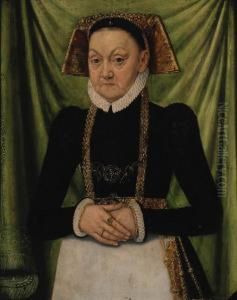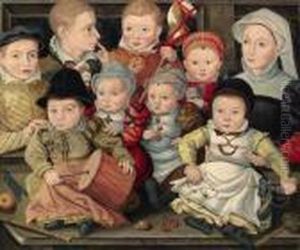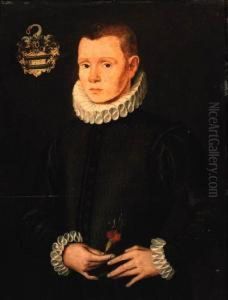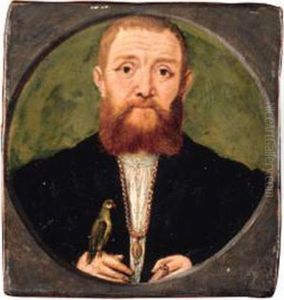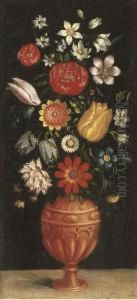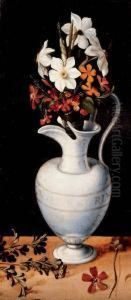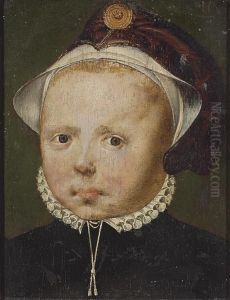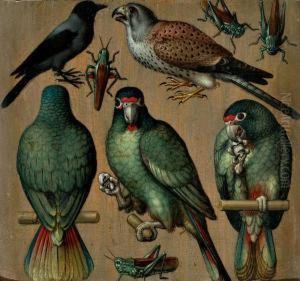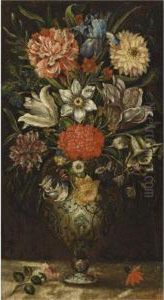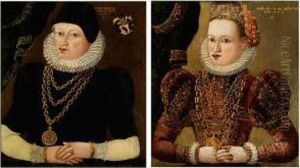Ludger Tom Ii Ring Paintings
Ludger tom Ring the Younger was a German Renaissance painter born in Münster, Westphalia, in 1522. He came from a family of painters; his father, Ludger tom Ring the Elder, was also a distinguished artist, and his brother Hermann tom Ring was a painter as well. The tom Ring family contributed significantly to the artistic scene of their time, especially in Münster.
Ludger the Younger was known for his detailed and vivid portraits, as well as his still lifes, a genre that was still in its infancy during the Renaissance. His works often featured intricate details and a rich use of color, which showcased his skillful craftsmanship and keen eye for composition.
During his lifetime, Ludger tom Ring the Younger's reputation as an artist was considerable, and he received commissions from prominent figures of the time. He was also involved in the decoration of local churches, contributing to religious art with altarpieces and other ecclesiastical works.
Ludger's style reflects the transition from the late Gothic to the Renaissance period in Northern Europe. His work is characterized by a blend of traditional Gothic elements with the emerging Renaissance emphasis on perspective and human anatomy, reflecting the artistic developments of the era.
Despite his success, Ludger tom Ring the Younger's work was somewhat overshadowed by the achievements of other Renaissance masters, and as a result, he is not as widely remembered today as some of his contemporaries. However, his paintings remain valuable examples of Northern Renaissance art, and they continue to be studied for their contribution to the evolution of painting during this transformative period.
Ludger tom Ring the Younger died in Münster in 1584. His legacy lives on through his surviving works, which can be found in various museums and collections, illustrating the rich artistic heritage of the Renaissance in Germany.
